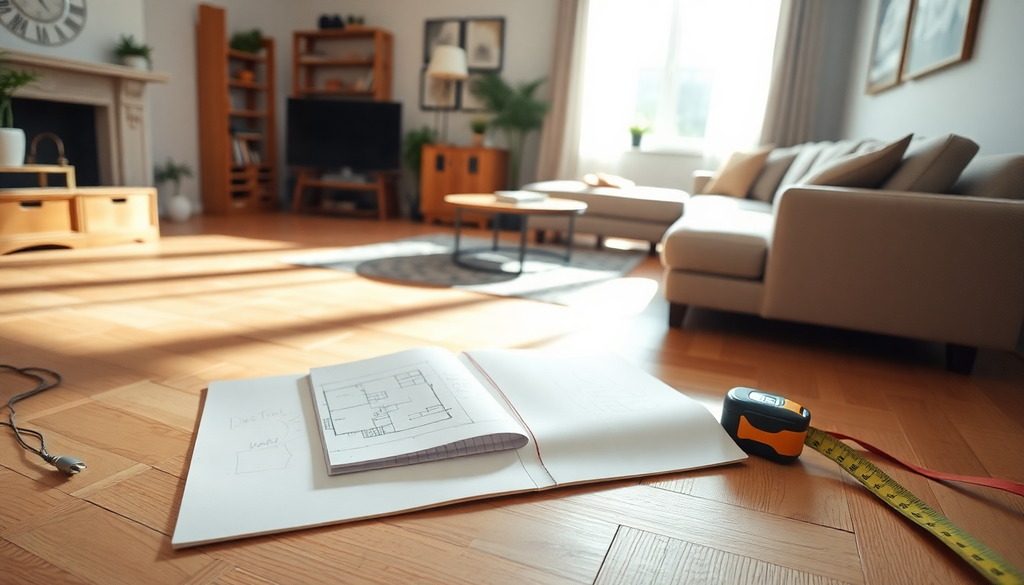Measure your space before buying furniture

Why Measuring Space for Furniture Matters
Buying furniture without measuring is like trying to build a puzzle without knowing if the pieces actually fit — frustrating, time-wasting, and sometimes costly. Here’s the deal: accurate measurements aren’t just a nice-to-have; they’re the foundation of a stress-free furniture-buying experience. Skip this step, and you risk a delivery-day disaster: a dresser that gets wedged in your stairwell, or a couch that shrinks your living room into something that feels more like a walk-in closet.
Measuring ensures you’re making smart choices. It helps you dodge return fees, steer clear of awkward layouts, and sidestep the heartbreak of discovering your dream sectional can’t make it through your front door. Plus, when your furniture fits properly, the flow of the room works better — the space feels intentional, balanced, and comfortable instead of chaotic and cramped.
Think of it this way: a tape measure is your best friend. It saves your money, time, and sanity. Taking 10 minutes now beats hours of trying to figure out how to jam a too-big table into too-small a dining room. And anything that reduces stress? That’s the kind of furniture hack you can live with. Literally.
Key Measurements and Considerations
If you’re serious about avoiding furniture-buying disasters, getting the measurements right is non-negotiable. Here’s how to approach it with precision and common sense:
Know the Typical Furniture Dimensions
Before you even reach for your tape measure, familiarize yourself with the standard sizes of the furniture you’re shopping for. It gives you a reality check before you fall in love with a massive couch that belongs in a castle, not your modest living room.
For example:
- A typical three-seat sofa is 30-35 inches deep by 80-90 inches wide. If space in your living room is tight, aim for a loveseat instead, which averages 60 inches wide.
- Shopping for beds? A queen-size mattress needs 60 by 80 inches of floor space, without counting the frame or headboard. Already tight on nightstand real estate? A full bed might be a smarter move.
This is baseline info. Keep it handy—it’ll save you from eyeing furniture pieces that have no shot at fitting.
Measuring Your Room Dimensions for Furniture
Ready to size up your space? It’s as simple as grabbing a tape measure and a notebook.
Here are the steps:
-
Document Your Room Dimensions. Measure the obvious: length, width, and ceiling height. Also think beyond the basics—what about that strange alcove or angled wall? Annotate those details.
- Map it Out. Old-school graph paper or a slick digital room planner works equally well. Scale everything down so you can play around with hypothetical layouts. Trust us, a five-minute sketch beats the hassle of rearranging a couch later.
Measuring Doorways, Hallways, and Entry Points

Here’s the step everyone forgets until the delivery team is stuck wedging an oversized dresser into a too-narrow hallway: measure your entry points.
- For doorways, measure the width and height of the frame. Then—and this is key—check for clearance issues, like hinges or wall angles that might reduce the usable opening.
- For hallways, measure the tightest spots, especially around corners. Big couches are basically puzzles, and you don’t want to be the person stuck solving them on delivery day.
- If you live in an apartment don’t skip the elevator. Write down the interior dimensions and, if needed, the diagonal clearance (some pieces only fit angled).
Making sure your furniture can actually enter your home? It’s not glamorous, but it saves headaches when your new sectional doesn’t get stranded outside.
Furniture-Specific Measurements to Note
Not all furniture is created equal, and neither are their measurements:
-
Couches: Check not just the overall size but also the seat depth and back height. These affect comfort as much as fit.
-
Desks: Beyond width and depth, look for leg clearance. Nothing’s worse than smacking your knees against a too-shallow frame.
- Beds: Account for headboards, footboards, and how much they eat into your room layout.
Tips for Avoiding Furniture Sizing Mistakes
-
Masking Tape Is Your Friend. Outline the intended spot for your new piece on the floor. Does it cramp the room? Block walkways? If yes, rethink.
- Budget for Breathing Room. Ideally, furniture shouldn’t press up against every wall or other pieces. Leave 18–24 inches of clearance for pathways and an extra few inches around cabinet doors, recliners, or pull-out beds to keep things functional.
Taking these measurements will help anchor your furniture shopping choices in reality.
Conclusion
Measuring space for furniture isn’t just about jotting down numbers—it’s about avoiding chaos. A sofa wedged at an odd angle in your doorway doesn’t scream "welcome home," nor does a dining table you can’t comfortably walk around. By investing a bit of time up front to map out your room dimensions, check entry points, and visualize your layout, you get to sidestep expensive mistakes and unnecessary frustration. These aren’t just tips—they’re lifelines to a home that actually feels harmonious and functional. Follow the process once, and you’ll never buy furniture the reckless way again.

